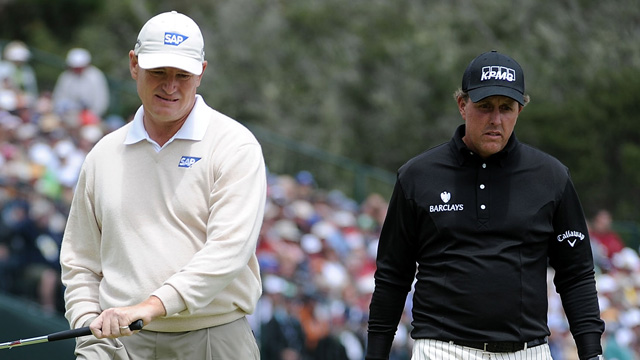NEWS
A Lesson Learned: Proper practice will mean peak performance

I watched this past U.S. Open with great interest and from a variety of perspectives. Like many of you, I watched as a fan. There's few things in the world more entertaining and fascinating than watching the world's best players take on a course like Pebble Beach under U.S. Open conditions.
I also watched as a teacher. I see every level of player here at Pinehurst Golf Academy and watching the players act, and react, under such pressure offers so much insight into how all players can improve their games. And finally, as a staff member here at Pinehurst Resort, I watched as someone who has a very keen interest in how major championships, and in particular, U.S. Opens, are conducted.
Congratulations to my friends at Pebble Beach Golf Links for another outstanding event. We here at Pinehurst will be hosting the 2014 U.S. Opens, both the men's and women's. I hope we have similarly exciting and dramatic championships similar to this year's. So what did we learn from this week's 2010 U.S. Open?
For me, I learned the importance of practice and preparation. Not just the technical aspects of a full swing or a putting stroke, but preparing to peak when it matters the most. No matter what level of golfer you are, you are going to encounter events that mean a little bit more than the others. For the elite golfers of today, those are the major championships.
In these, we are given an opportunity to see about every possible combination of golf imaginable. Great swings and remarkable results, often followed by poor swings and disappointing outcomes. Good decisions made on course strategy are rewarded with birdie opportunities or, in contrast, poor decisions result in the difficult task of making a three-foot putt for bogey or even worse. The conditions and the pressures at these major championships mean that what a player does to get ready for the week is directly related to the results they get during the week. But what does proper preparation for a U.S. Open mean? Or, better yet, how would you use similar preparation techniques for your advantage when preparing for a tournament or important game?
A place to begin is by discussing the different types of practice routines that can help in the preparation process. The first type of routine is Traditional Practice. This type of practice involves a high volume of repetition working on specific swing technique issues. In short, lots of swings are taken, working to incorporate new swing thoughts with very little focus on such issues as targets or pre- and post-shot routines. For the most part, this is the most common type of practice routine among amateurs. The downfall of this type of routine is that is does not necessarily prepare you for the course. It is artificial, at best.
The second type of routine is Transfer Practice. This style of practice is a combination of technique along with imagery. For example, you might, in your mind, play the first nine holes of your tournament course during this type of practice routine while you continue your work on technique on the practice tee. Or you could hit shots that you know you will be required to play when on the course. In either case, Transfer Practice is an attempt to create the golf course environment while on the practice tee. Though not typically practiced by the amateur golfer, this type of routine is perhaps one of the most effective practice routines for incorporating swing changes while preparing for the course.
The third type of routine is On-Course Practice. This type of practice is just as described. You practice on the course. As you play a hole, you continue your work on swing technique changes, but you also try shots that you might face on the course in an upcoming tournament or high stakes game. The basic idea in this environment is to not hit 15 drives in a row (a common strategy when in the "Traditional Practice" environment), but it is rather to incorporate a "playing" mode when practicing. You should experiment with different type of shots and even going as far as trying shots that you may never have tried before. It is always better to come from a direction of experience with certain types of shots than trying a shot for the first time on course in competition.
Many players know about the first practice technique, some think they know they third type (though may not employ it properly) and few actually incorporate the second type. But all three, when employed together and employed correctly, will make every player perform to their optimal ability at the critical time. In the end, the basic idea of practice is simple: prepare in a way to allow you to perform your best when on the course. Make it real.
Eric Alpenfels serves as the Director of Instruction and Golf Academy at Pinehurst Resort. In addition, Eric is a Adjunct Faculity Member of the PGA of America. Currently, Eric is listed as one of Golf Magazines Top 100 Instructors and 50 Greatest Teachers as listed by Golf Digest.
